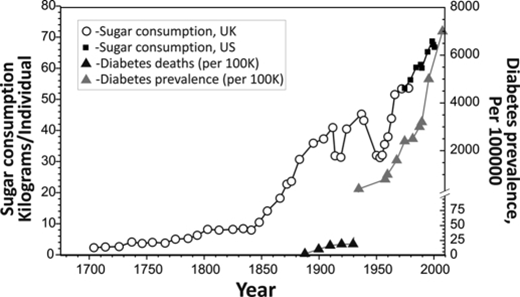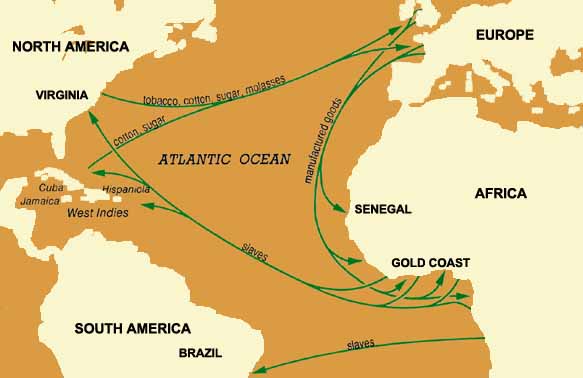BASICS
- Sugar Cane of South Pacific origin and then ‘migrated’ across Asia into Europe and then the world.
- American production linked to the African American slave trade.
- Luxury item until 20th century. Cheap preservative and ‘palatable’ appetite stimulant in the latter 20th century.
- Ancel Keys ‘7 Countries’ research claims that High Saturated Fat diets are the cause of increasing heart attack and stroke incidence. ‘Ignored’ the other 15 countries that he looked at. Reworking the data showed that it was a high Fructose diet as the link. Keys honoured for his work (until 2012).
- High Fructose Corn Syrup developed by the Japanese and introduced to the USA.
- Low Fat food tastes ‘like cardboard’ so Sugar and High Fructose Corn Syrup (HFCS) added.
- USA farm subsidies for Corn development as USA climate not ideal for Sugar Cane production.
- USA and FDA support for USA food production industry. Birth of the ‘Food Pyramid’ for world wide consumption.
- John Yudkin (British Nutritionist) tries to tell the USA and the world that if you feed rats fat that they don’t get fat. If you feed them sugar they get Metabolic Syndrome. Denounced until 2012.
- Dramatic increase in annual consumption of Sugar over the last 100 years mirrored by an increase in Disease, Obesity and Cancer.
- New awareness that the quantity and frequency of Fructose consumption may be the link to Disease and Tissue Damage.
Read about the Health Issues
IDEAS
Sugar Consumption Estimates for Australia
1800 – Estimate 1-2 kg per annum per person
1900 – Estimate 5 kg per annum per person
2010 – Estimate 50 – 65 kg per annum per person
2050 Gary Fettke Prediction – Less than 5 kg per annum!
Sugar Tower Taller than Sydney Harbour Bridge
Make a stack of sugar cubes for the average annual Australian intake of sugar and it will make a tower 35 metres higher than the top of the Sydney Harbour Bridge!
As I have cut my intake down by 95%, then someone else is having twice the average. Ow.
MORE INFORMATION

I came across this history of sugar on the BBC. I acknowledge Anne Gibson.
How we became addicted to sugar
By Anne Gibson BBC History on 26 November 2012
First discovered growing as a wild grass in the South Pacific around 8,000 BC, travellers and traders helped spread sugar across the globe.
For centuries it was regarded as a status symbol, too expensive to be consumed in great quantities.
Slaves from West Africa were forced to work on sugar plantations
Britain’s love affair with the sweet stuff began in the 1600s. Settlers on the British colony of Barbados discovered sugar cane thrived in the island’s stony soil where crops of cotton and tobacco had failed.
Providing three harvests a year, farming sugar cane became a lucrative business. The discovery prompted a ‘sugar rush’ with settlers descending on Barbados – keen to cash in on the wealth it created.
Mass production of sugar saw Britain grow rich, helping to build the Empire.
It was physical work. Indentured Scots and Irishmen did much of the hard graft but they were soon replaced by a cheaper option – slaves from West Africa.
It was a dark period in British history, says David Richardson, Professor of Economic History at the University of Hull.
“I don’t think you can underestimate the importance of sugar to the development of transatlantic slavery”.
“Six million enslaved Africans were deposited in the West Indies, and yet when you look at the numbers liberated they’re far fewer than six million. And the reason is… sugar kills slaves in the process of cultivating it and refining it,” he adds.
The slaves were at the mercy of the plantation owners and overseers who had little regard for their welfare. Even pregnant women were made to work in the fields, and slaves were not given adequate nutrition.
“These are guys who are there to make money and get out. The objective of the system is to produce the sugar, not to provide an easy way of life for the slaves – as long as you have access to more slaves,” adds Prof Richardson.
‘For the poor in the 19th century a lot of their calorific intake came from sugar – they could have been taking in calories from elsewhere that came with nutrients” from Dr Annie Gray, Food historian.
Britain had the monopoly on the sugar cane trade for over a century. During the Napoleonic wars of the early 1800s the British blockaded France’s trade routes with the Caribbean, leaving the country with low supplies of sugar.
Keen to find a solution, Napoleon invested heavily in the production of sugar beet, a relatively new discovery. With 40 sugar beet factories operating across the country, France once again had its sugar fix.
It was not long before sugar beet flooded the British market. The price dropped and by 1850 sugar was finally affordable for all.
The public could not get enough of this cheap and tasty pick-me-up. From sweetened tea in the workplace, to meals on the family table, to the new working class tradition of high tea – sugar soon became indispensable.
Far from being an unhealthy choice, this new foodstuff played an important role in family eating habits, says food historian Dr Annie Gray.
“It’s a question of, are your children going to eat that dry bread? No. If you spread it with a bit of jam can you get them to eat it? Yes.”
It did not take long for sugar to become a household favourite.
“If you look at the diet of the working class at the beginning of the 19th century, you’re pretty much looking at bread, potatoes, cheese, butter if you’re lucky, maybe a bit of bacon fat,” says Dr Gray.
“By the end you’re looking at bread, butter or margarine, jam and cake.”
So addicted were we to this new taste, that at the beginning of the 19th century we consumed 12 pounds of sugar per head. By the end of the century that amount had rocketed to 47 pounds per head.
But this new-found pleasure came at a price.
“For the poor in the 19th century a lot of their calorific intake came from sugar, and the problem with that is they could have been taking in calories from elsewhere that came with nutrients”, says Dr Gray. “Malnutrition among the poorer classes at the end of the 19th century was awful.” (END)
The later history is summarised above in Basics.
Please add information by going to Contribute to NoFructose.com
ARTICLES
To Follow
